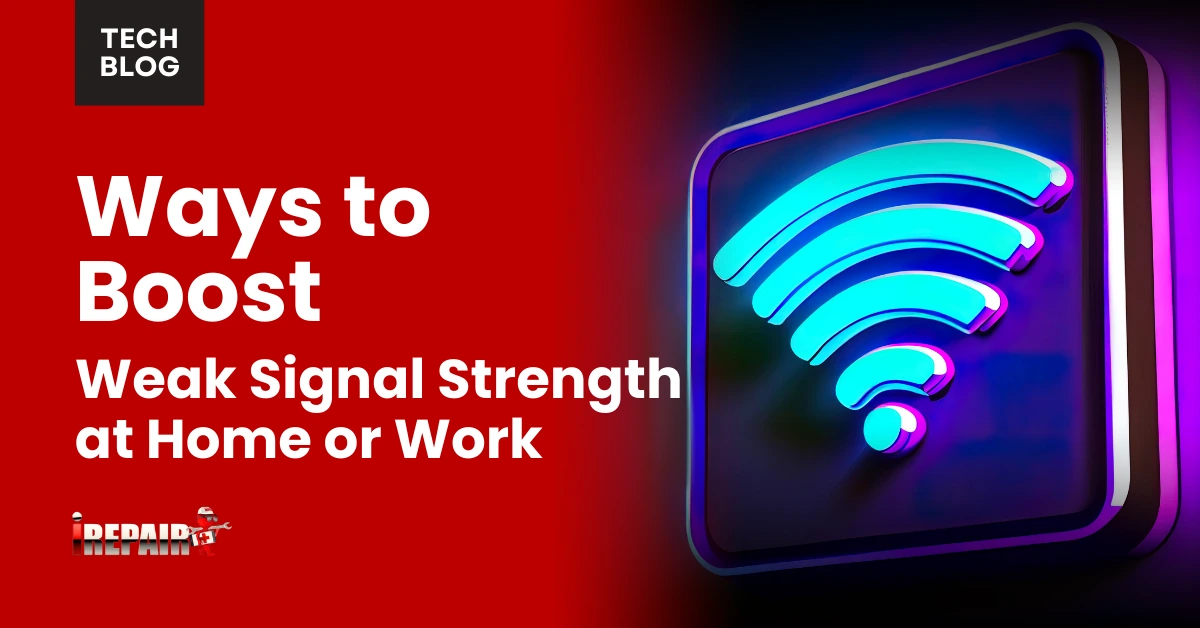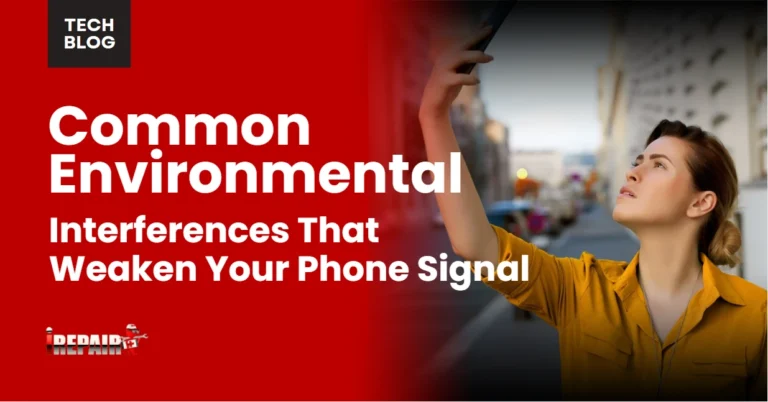Ways to Boost Weak Signal Strength at Home or Work
To boost weak signal strength, start by placing your router centrally at an elevated position, away from metal objects and electronics. Switch to the 5GHz band and select less crowded channels using a WiFi analyzer app. Consider investing in signal boosters, extenders, or a mesh network system for extensive coverage. Upgrading to a newer router with beamforming technology and WiFi 6 support can dramatically improve performance. The solutions below offer specific strategies for transforming your connectivity experience.
Optimize Your Router Placement for Maximum Coverage
Everyone struggles with WiFi dead zones, but your router’s location can make all the difference. The most effective router placement strategies involve positioning your device in a central, elevated location away from walls and obstructions. Avoid placing it near metal objects, mirrors, or electronic devices that can interfere with signals.
For multi-story homes, position the router near the ceiling of the first floor or the floor of the second story to maximize vertical coverage. If your home layout makes central placement impossible, wireless extender solutions can help bridge the gap. These devices capture your existing signal and rebroadcast it to reach distant rooms.
Remember that experimenting with different positions might be necessary, even moving your router a few feet can dramatically improve coverage throughout your space.
Eliminate Signal Interference From Other Devices
Three common household devices could be secretly sabotaging your signal strength without you realizing it. Microwave ovens, cordless phones, and baby monitors all operate on the 2.4GHz frequency, the same as many WiFi networks, creating electronic interference from other devices.
To implement effective interference reduction methods, start by relocating your router away from these appliances. Consider switching your WiFi to the 5GHz band, which experiences less congestion and interference. Additionally, update your router’s firmware regularly, as manufacturers often release patches that improve signal handling.
For persistent issues, use a WiFi analyzer app to identify which channels are least crowded in your area, then manually configure your router to use those channels. This simple adjustment can dramatically improve your connection stability and speed.
Invest in Quality Signal Boosters and Extenders
Several strategic investments can transform your connectivity experience when weak signals plague your home or office. For WiFi improvements, consider mesh network systems that create seamless coverage throughout large spaces, eliminating dead zones more effectively than traditional routers.
For mobile connectivity issues, cellular booster devices amplify weak signals by capturing them from outside, enhancing them, and redistributing stronger signals indoors. A quality phone signal booster can increase reception by several bars, especially beneficial in rural areas or buildings with signal-blocking materials.
WiFi extenders offer a budget-friendly alternative for smaller spaces, though they may create separate networks. For ideal results, choose boosters certified by your carrier and positioned strategically where signals naturally enter your building for maximum effectiveness.
Upgrade Your Router to a More Powerful Model
Your outdated router might be the primary culprit behind persistent connectivity issues. Modern routers offer significant advances in range, speed, and signal penetration that can dramatically improve your wifi optimization techniques throughout your home or office.
Look for dual-band or tri-band models that support the latest WiFi standards (WiFi 6 or 6E). These newer routers intelligently manage multiple devices and reduce congestion that hampers performance. Many also feature beamforming technology that directs signals toward your devices rather than broadcasting in all directions.
For thorough mobile network improvement, consider mesh router systems that use multiple access points to eliminate dead zones in larger spaces. The investment pays off quickly through increased productivity and fewer frustrating disconnections during important calls or downloads.
Consider Installing a Mesh Network System
Many conventional routers struggle to deliver consistent coverage throughout larger homes or offices with multiple walls and floors. This is where mesh networks offer superior wifi signal improvement over traditional setups.
Unlike single routers or extenders, mesh systems use multiple nodes that communicate with each other to blanket your entire space with a stronger network signal. You’ll eliminate dead zones as the system creates a seamless network where you can move from room to room without losing connection.
Setup is typically straightforward with user-friendly apps that guide installation and help identify ideal node placement. Though more expensive than basic routers, the investment pays off through reliable coverage, simplified network management, and scalability. You can always add more nodes as needed to expand your coverage area.
Frequently Asked Questions
Will a VPN Affect My Signal Strength or Internet Speed?
A VPN can affect your internet speed but not your signal strength. You’ll typically experience some slowdown when using a VPN because your data travels through additional servers. This encryption process creates overhead that can reduce speeds by 10-30%. However, if your ISP throttles certain activities, a VPN might actually improve speeds by bypassing these restrictions. Your physical signal strength remains unchanged since VPNs operate at the software level.
Can Weather Conditions Impact My Wifi or Cellular Signal Quality?
Yes, weather conditions can drastically impact your WiFi and cellular signal quality. Heavy rain, snow, and thunderstorms can absorb or scatter radio waves. High humidity can also weaken signals. For cellular connections, dense cloud cover and fog can interfere with transmission between your device and cell towers. During extreme weather events, you’ll often notice slower internet speeds, dropped calls, and intermittent connectivity issues. This is why your connection might seem worse during stormy weather.
Do Smartphone Cases Interfere With Reception and Signal Strength?
Yes, certain smartphone cases can interfere with your reception. Thick, metal, or cases with magnetic components can block or weaken cellular signals by creating a barrier between your phone’s antennas and the cell tower. Rugged, waterproof cases with multiple layers are often the worst offenders. You’ll notice this most in areas with already a weak signal. For better reception, consider using slim plastic or silicone cases instead of metallic ones.
How Often Should I Reset My Router for Optimal Performance?
You should reset your router about once a month for ideal performance. Regular resets clear the cache, refresh connections, and can resolve minor glitches that develop over time. If you’re experiencing connectivity issues, try rebooting it immediately as a first troubleshooting step. Some users benefit from setting up automatic weekly resets using a timer plug. Remember that after resetting, your connections will need a few minutes to reestablish.
Are There Specific Apps That Accurately Measure True Signal Quality?
Yes, several apps can accurately measure your signal quality. For WiFi, try “WiFi Analyzer” (Android) or “NetSpot” (iOS/Mac/Windows) to check signal strength and network congestion. For mobile signals, “Network Cell Info Lite” (Android) or “OpenSignal” (iOS/Android) provides detailed metrics. These tools display signal strength in dBm, connection quality, and speed, giving you a more precise understanding than just the signal bars on your device.







